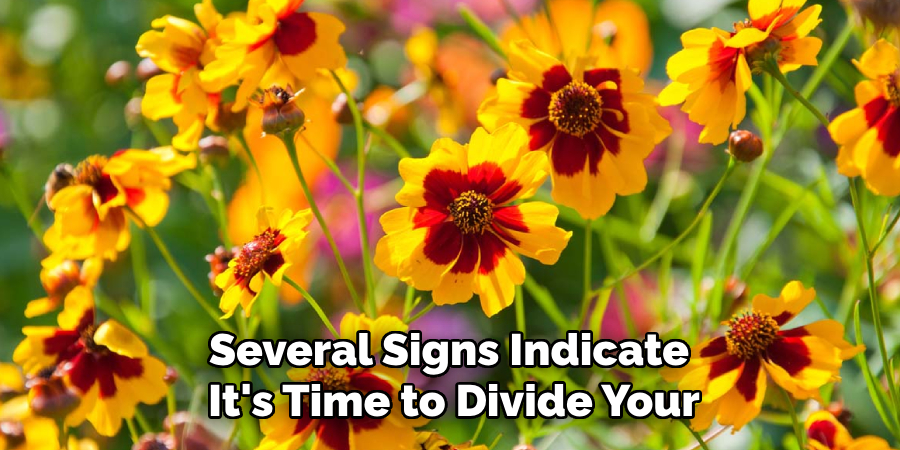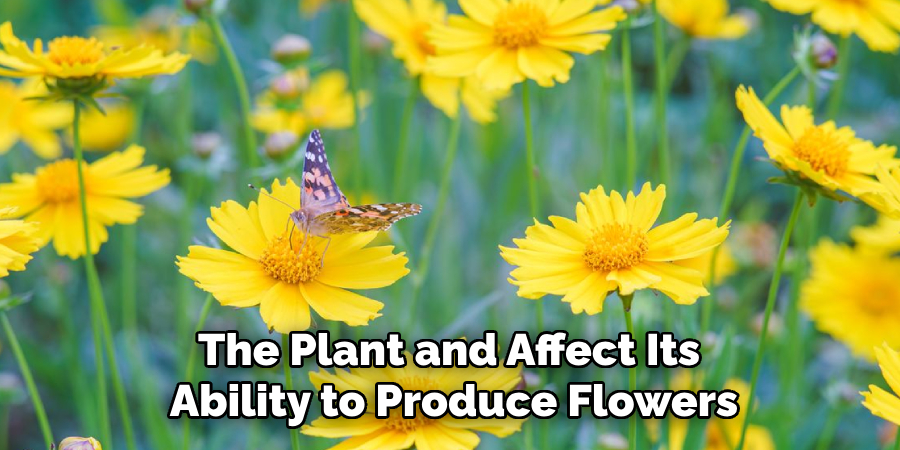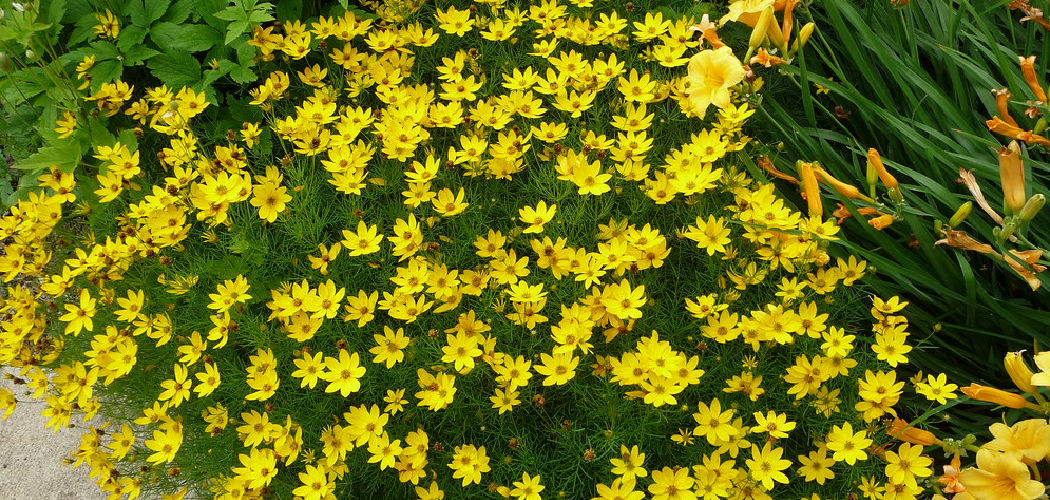Coreopsis, often referred to as tickseed, is a beloved garden perennial known for its bright daisy-like flowers and easy care. These low-maintenance plants add cheerful color to any landscape and are especially attractive to pollinators like bees and butterflies. Over time, coreopsis plants can become overcrowded, leading to diminished flowering and overall vitality.

Dividing these plants is an essential practice that not only maintains their health but also encourages more robust blooms. This guide will teach you how to divide coreopsis, ensuring that your garden remains vibrant and thriving.
Understanding Coreopsis Plants
Characteristics of Coreopsis
Coreopsis is a hardy perennial native to North America, thriving in various climates and soil conditions. These plants are characterized by their bright, sunny blooms that range in shades of yellow, pink, and even red. Their slender stems and feathery foliage add a delicate texture to any garden. Coreopsis is not just visually appealing; it’s incredibly resilient, tolerating drought and poor soil once established.
Benefits of Growing Coreopsis
Growing coreopsis comes with many benefits. These flowers are pollinator magnets, drawing in bees, butterflies, and other beneficial insects to your garden. Additionally, they offer an extended blooming season, often lasting from early summer through fall. With their low maintenance needs and adaptability, coreopsis is perfect for gardeners of all skill levels.
Why Dividing Coreopsis Is Necessary
Prevents Overcrowding
Over time, coreopsis can spread and grow densely, causing overcrowding in garden beds. When this happens, the plants compete for nutrients, water, and sunlight, which can lead to stunted growth and fewer blooms. Dividing the plants helps alleviate this competition, giving each section ample resources to flourish.

Encourages Healthier Growth
Older plants that have become overgrown often show signs of declining health, such as fewer flowers or weak stems. Dividing coreopsis rejuvenates the plant, stimulating new root and shoot growth for a healthier and more vibrant display.
Promotes Better Blooms
Dividing encourages the plant to focus its energy on producing flowers rather than maintaining an overgrown root system. This results in more abundant and striking blooms, enhancing the overall beauty of your garden.
Best Time to Divide Coreopsis
Seasonal Considerations
Timing is a critical factor in successfully dividing coreopsis. The ideal time to divide these plants is during their dormant period, either in early spring before new growth begins or in late fall after they’ve finished blooming. Both periods allow the plant to recover and establish itself in its new location without the added stress of flowering.
Plant Indicators
Several signs indicate it’s time to divide your coreopsis. If you notice thinning blooms, weak stems, or a crowded root system, it’s likely time to rejuvenate the plant through division. Another sign is when the center of the plant appears dead or hollow while growth continues around the edges.

Tools and Supplies Needed
Essential Garden Tools
To divide coreopsis effectively, you will need the right tools. These include:
- A sharp spade or garden fork for digging.
- Pruning shears for trimming excess foliage.
- Gardening gloves to protect your hands.
- A watering can or hose to hydrate the plant after division.
Preparing Your Tools
Before starting, ensure your tools are clean and sharp. Dirty tools can introduce diseases to the plant, while dull tools make the process more labor-intensive and potentially harmful to the plant.
Step-by-Step Guide on How to Divide Coreopsis
Preparing the Plant and Site
Water your coreopsis the day before dividing to ensure the roots are hydrated and easier to work with. Select a new location for the divided plants with similar growing conditions—well-draining soil and plenty of sunlight.
Lifting the Plant
Using a spade or garden fork, gently dig around the base of the plant, aiming to preserve as much of the root system as possible. Lift the entire clump out of the ground, being careful to avoid damaging the roots.
Dividing the Root Clump
Inspect the root ball for visible divisions or natural separations. Using a sharp knife or your hands, separate the clump into smaller sections, ensuring each section has its own healthy roots and shoots. Avoid dividing the plant into pieces that are too small, as they may struggle to reestablish.

Replanting Divided Sections
Plant each divided section in a prepared hole at the same depth as the original plant. Space the sections about 12–18 inches apart to allow room for growth. Backfill the hole with soil, pressing gently to eliminate air pockets.
Post-Division Care
Water the newly planted divisions thoroughly to help them settle. Apply a layer of mulch around the base of the plants to retain moisture and regulate soil temperature. Monitor the plants closely over the next few weeks for signs of stress or wilting.
Common Mistakes to Avoid
Dividing at the Wrong Time
Avoid dividing coreopsis during its peak blooming period, as this can strain the plant and hinder its recovery. Stick to early spring or late fall for the best results.
Over-Dividing the Plant
Dividing the root clump into excessively small sections can weaken the plant, making it harder for each piece to establish itself. Aim for divisions with a healthy balance of roots and shoots.
Failing to Replant Immediately
Leaving divided sections exposed to air for too long can dry out the roots, reducing their chances of survival. Always replant divisions promptly after splitting.
Tips for Long-Term Care
Regular Watering and Fertilizing
After division, ensure the plants receive consistent watering, especially during the first few weeks as they establish. Once settled, coreopsis prefers moderate watering and doesn’t require heavy fertilization.
Monitoring for Pests and Diseases
Watch for signs of common issues like root rot or pest infestations, which can hinder the plant’s recovery. Treat any problems promptly to maintain healthy growth.
Addressing Frequently Asked Questions
How Often Should I Divide Coreopsis?
Coreopsis plants should generally be divided every three to five years, depending on their growth rate and health. Regular division keeps them vigorous and blooming profusely.
Can Division Be Done for Potted Coreopsis?
Yes, potted coreopsis can also be divided using the same techniques. Ensure that the new pots have adequate drainage and are filled with fresh, well-draining soil. Water thoroughly after transplanting.
How Do I Care for My Newly Divided Coreopsis?
Newly divided coreopsis should be kept well-watered and placed in a location with partial shade to help them adjust to their new environment. Once established, they can be moved to a sunny spot with good drainage.
When is the Best Time to Divide Coreopsis?
The best time to divide coreopsis is in late winter or early spring, before new growth begins. This gives the plant plenty of time to establish its roots before the hot summer months.
Can I Divide Coreopsis During Its Blooming Season?
It is not recommended to divide coreopsis during its blooming season, as it may shock the plant and affect its ability to produce flowers. It is best to wait until the plant has finished blooming for the season before dividing it.

Troubleshooting After Division
Slow Growth or Wilting
If your divided coreopsis shows signs of slow growth or wilting, it may be due to inadequate watering, poor soil conditions, or environmental stress. Address these issues by improving care practices and monitoring the plant’s progress.
Pest Infestation on Newly Divided Plants
Newly divided plants can be susceptible to pests. Inspect them regularly and use organic pest control methods if needed to keep them healthy.
Overcrowding of Divided Plants
If you notice overcrowding of your divided coreopsis, it may be time to divide them again. This typically occurs every three to four years. Carefully lift and divide the plants once they have finished flowering in the summer or early fall.
Lack of Flowering on Newly Divided Plants
It is common for newly divided plants to take some time to establish their root systems before producing flowers. Be patient and continue providing proper care until they begin blooming again.
Frequently Asked Questions About Divided Coreopsis
How Often Should I Divide My Coreopsis Plants?
Coreopsis plants typically need to be divided every three to four years to prevent overcrowding and to maintain their health and vigor. Watch for signs like reduced flowering or dense growth to determine when division is necessary.
When Is the Best Time to Divide Coreopsis?
The best time to divide coreopsis is after they have finished flowering in the summer or early fall. This timing ensures that the plants have enough time to establish their roots before winter.
Why Aren’t My Newly Divided Coreopsis Blooming?
Newly divided coreopsis plants may take some time to establish their root systems, which can delay flowering. Be patient, and continue providing water and care until the plants acclimate and begin blooming.
Can I Divide Coreopsis in the Spring?
While dividing coreopsis in the spring is possible, it may not be ideal as it can disturb the plant’s growing cycle. Dividing in late summer or early fall is generally recommended for the best results.
Conclusion
Dividing coreopsis is a straightforward yet rewarding process that ensures your plants remain healthy, vibrant, and abundant with blooms. By following the steps outlined in this guide, you can rejuvenate your coreopsis and create more plants to spread cheer throughout your garden.
Remember, regular division is key to maintaining thriving coreopsis plants. Now that you know how to divide coreopsis, you’re ready to get started and enjoy a flourishing garden.

